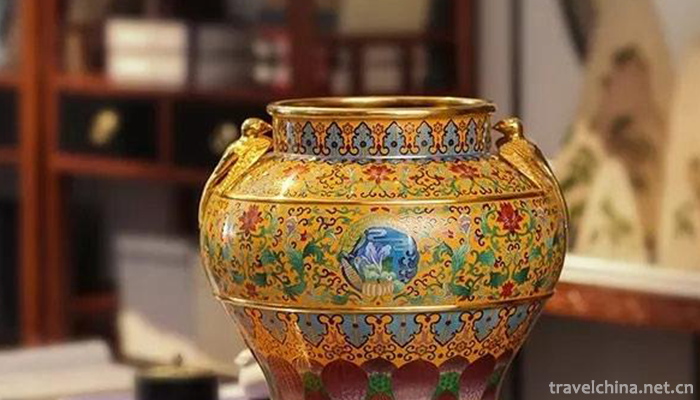Mosaic inlaid porcelain
Declaration area or unit: Puning City, Guangdong Province
Chinese mosaic art has a long history and unique style. In the Yin and Shang Dynasties, the decorative patterns of gold inlaid with jade appeared in bronze casting. With the continuous improvement of technological level, natural colored stones, pebbles, shells, molars, gems, jades and artificial glass, ceramics, wood and so on have become mosaic raw materials. In the long-term development process, mosaic art has accumulated many important technical means, including direct mosaic method, prefabrication method, anti-paste and reverse-paste method, positive-paste and positive-paste method, etc. Besides plane mosaic, it can also be mosaic on relief. This mosaic method can further enhance the stereo sense of mosaic objects. After Ming and Qing Dynasties, relief mosaics were widely used in decoration of various arts and crafts. In the middle and late Qing Dynasty, relief mosaics were also used to mosaic the stories of opera characters on different "dizi", such as inlaid porcelain and bone wood. Mosaic handicraft has the advantages of strong, sun-proof, moisture-proof and non-discoloration. The texture of materials and the resulting shape, color and light effect add artistic charm to the mosaic handicraft, showing the beauty of rough, thick, luxurious and gorgeous.
Embedded porcelain, also known as "Jurao", "Jianlao", "Jianlao", is a popular folk architectural decoration art in Chaoshan area of Guangdong Province. On the basis of painting and sculpture, it uses specially fired enamel chips to glue figures, flowers, birds, animals and other artistic forms to decorate the roofs and walls of temples and buildings. Chaoshan inlaid porcelain technology has a unique style, mostly using semi-relief or round carving style, vivid image, colorful, solid and stable texture, can withstand the sun and rain without fading. In Chaoshan area, porcelain workshops often cooperate closely with inlaying craftsmen to produce low-temperature porcelain of various colors. These chinaware are carefully cut by craftsmen to form the necessary chinaware for mosaic. Then the chinaware pieces are assembled into local components with adhesives. Finally, the components are combined to form various patterns or statues that represent folk customs, folk stories or auspicious and festive themes. Daliao inlaid porcelain and Puning inlaid porcelain are prominent representatives of Chaoshan inlaid porcelain. Daliao inlaid porcelain has a history of more than 100 years. It is mainly Chaoshan style and has the characteristics of southern Fujian. Puning inlaid porcelain has a long history, which can be traced back to Wanli period of Ming Dynasty.

0 Questions
Ask a Question
Your email address will not be published.